Cloud Modernization: The Guide to Futureproofing Your Systems

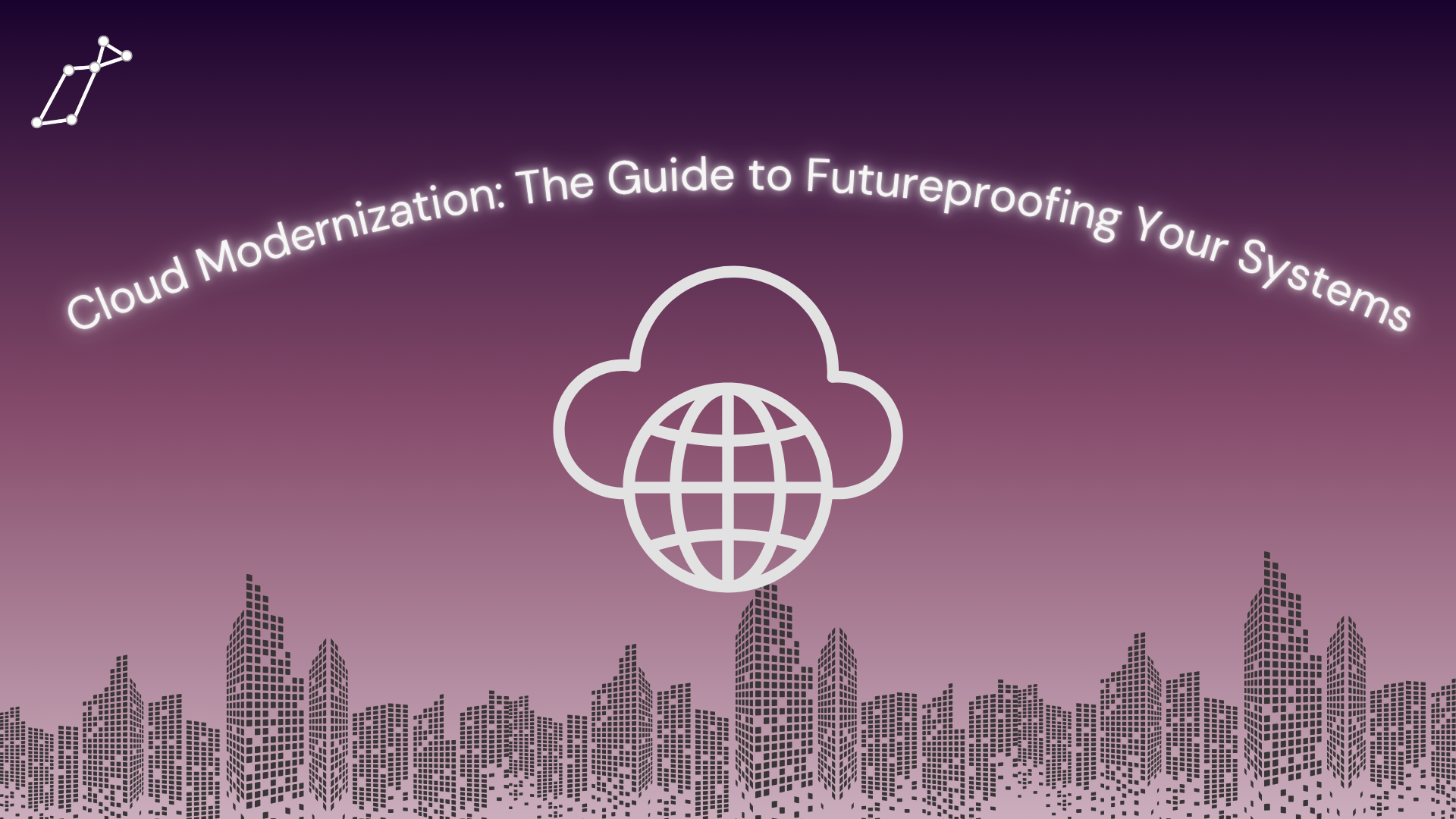

What is Cloud Modernization?
The human spirit runs on innovation, and the modernization of everyday life reflects that. Smartphones have revolutionized communication, GPS technology has evolved transportation and navigation, streaming has modernized entertainment, and so much more! Unsurprisingly, this drive towards modernization has also translated to business functions, driving many organizations operating on legacy tech to undergo cloud modernization.
Cloud modernization refers to the practice of enhancing cloud workloads by improving an organization's infrastructure, applications, workflows, and more with cloud native methodologies and solutions. The goal for cloud modernization involves prepping your solutions for cloud native solutions and capabilities, eventually aligning workloads into cloud best practices without extra onboarding.
While cloud computing can seem like a fad, the fact of the matter is that it's going nowhere. Cloud modernization is the first step for organizations looking to reinvigorate or even replace their legacy systems, however, the process is easier said than done. Organizations will typically work with cloud consultants before modernization, with cloud application modernization services playing an integral role in a successful transition. But what does a cloud modernization process look like?
Cloud Modernization Framework and Practices
To preface, there is no single surefire way of modernizing legacy systems and applications for the cloud. However, there are certain steps and key strategies / points of implementation that can help simplify the cloud modernization framework.
Cloud Modernization Steps
Cloud modernization can be chalked up into 4 steps, each containing their own substeps. A simple 4-step cloud modernization process can include:
- Preparation
- Planning
- Execution
- Optimization
Preparation
As the name suggests, preparation simply means preparing for cloud modernization in any shape or form. Before even preparing, organizations should ask themselves if cloud modernization is a necessary step towards growth, or if cloud computing is not worthwhile.
With any organizationwide change, preparing for cloud modernization starts with introspection, and then establishing clear goals and a definition of what modernization means to said company. Goal setting will vary from team to team, but should be consulted with key decisionmakers, stakeholders, and the teams that will be involved in a modernization process.
Once goals are established, preparing for cloud modernization simply becomes a process of gathering the information about an organization, such as:
- What skills do certain key teams possess?
- Which applications are going to be modernized?
- What systems should be backed up first?
- What timeframe does modernization require?
And so on.
Organizations undergoing cloud modernization should leave the preparation step with a clear idea of their goals, where they stand in terms of skills and applications, and a direction leaning into the next step.
Planning
Cloud modernization planning may vary company by company, with strategies and technology that will be implemented typically being chosen in this step.
At the basis of planning are 2 core factors:
- Determining what teams are responsible for core processes in cloud modernization
- Determining what skills are present and identifying current skills gaps
These tasks are key in establishing collaboration and also identifying skill gaps, with the main takeaway being plans to fill those gaps. In addition, companies should determine which cloud model best suits their needs, determining not only which type of cloud but also which vehicle of cloud (IaaS, PaaS, SaaS, etc) they are going to engage with.
Organizations leaving the planning step, at a bare minimum, should have:
- A clear direction for their cloud modernization process
- The technology, teams, and skills needed to execute cloud modernization
- Timelines for execution
- Backups for applications and databases
Execution and Optimization
Cloud modernization execution and optimization are two parts of a whole.
Execution sees teams implement cloud native tech, with integration sometimes requiring downtime. Before organizations launch their newly acquired technology, testing should be conducted frequently and diligently.
While a lot is changing during this step, it is important to monitor changes and performance, with monitoring leading directly to stronger optimization and stronger problem identification.
Cloud Modernization Practices
Simply put, cloud modernization is moving a basic, legacy system into a modern cloud system, which can often be done with modern cloud technologies and techniques. Amazon Web Services (AWS) defines core cloud modernization practices as:
- Containerization
- Building serverless applications and microservices
- Modernizing through managed data and databases
- Managed analytics and stronger insights
However, it is also shown that integrating detailed DevOps practices and using more automation for enhanced reliability can be instrumental to the success of cloud modernization. For organizations that rely on connectivity between their network and physical consumer devices, Internet of Things (IoT) is crucial.
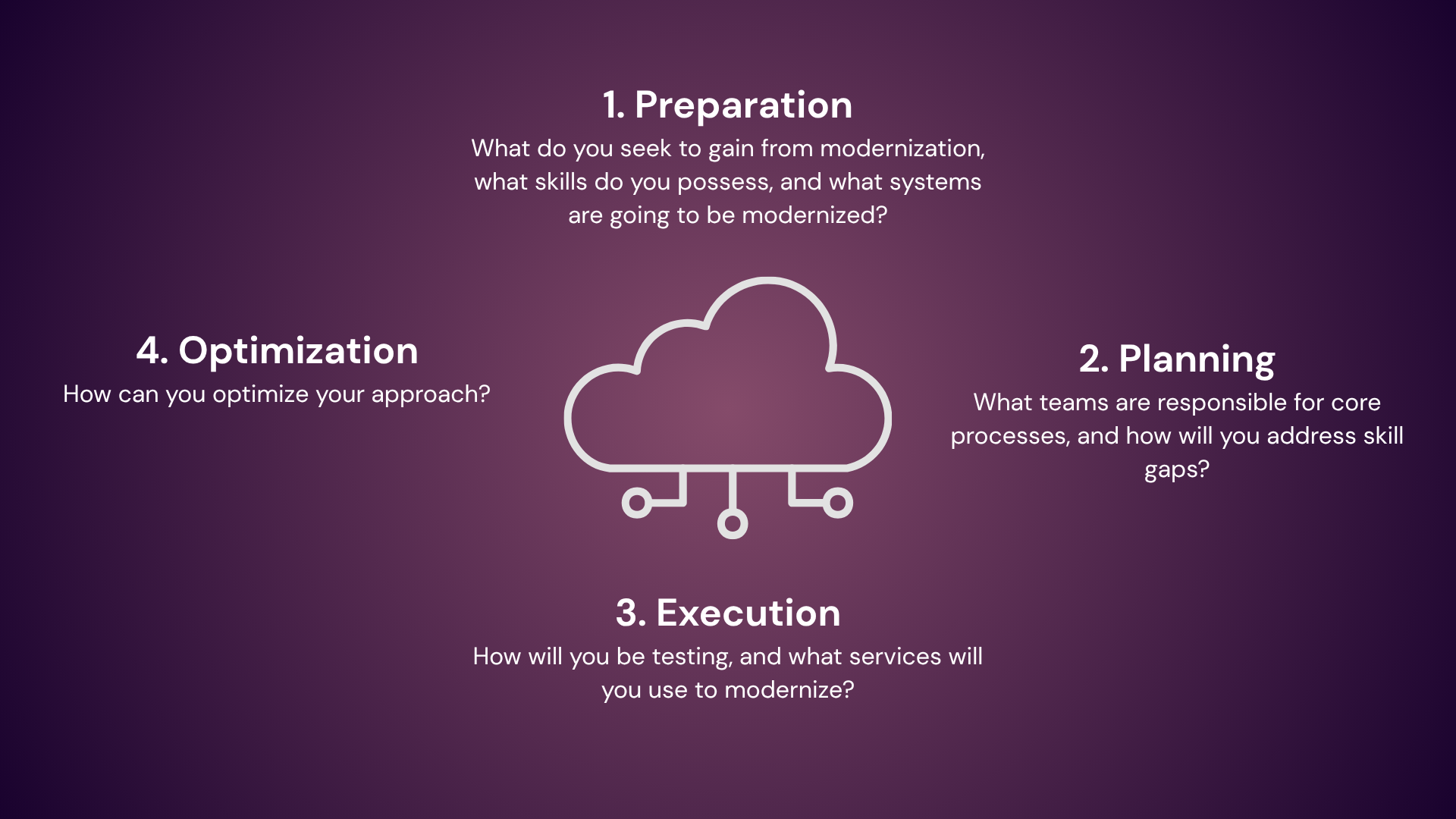
The 5 Rs of Cloud Modernization: Cloud Modernization Strategy for All Needs
As previously mentioned, cloud modernization strategies will vary by company, though there are common trends to observe from successful modernization. Much like cloud migration, cloud modernization has 5 central strategies for a successful modernation. And much like cloud migration, these strategies also have a nice ring to it- The 5 Rs of Cloud Modernization:
Rehost
Rehosting requires a change in infrastructure or operations, but without modifying the application itself. Rehosting is safe for data and service transfers, with users who prefer rehosting citing strong cost benefits for the rate of changing their application.
Replatform
Replatform sees organizations containerizing their applications and moving them to a Kubernetes-based platform. Replatforming is a great option for organizations that are looking for the most amount of customization, with only some code changes being required to take full advantage of a new environment.
Retain
Retaining sees optimizing applications as they are, or simply retaining an application until modernization is appropriate.
Refactor
Refactoring involves modifying an application with significant code changes, typically through the use of cloud native technologies. Refactoring is the most complex of the 5 Rs, and initially the most expensive. That being said, refactoring provides the strongest ROI of all strategies, especially for applications that require frequent updates.
Retire
As the name suggests, retiring sees application not making it to a modern cloud, being replaced with a modern solution.
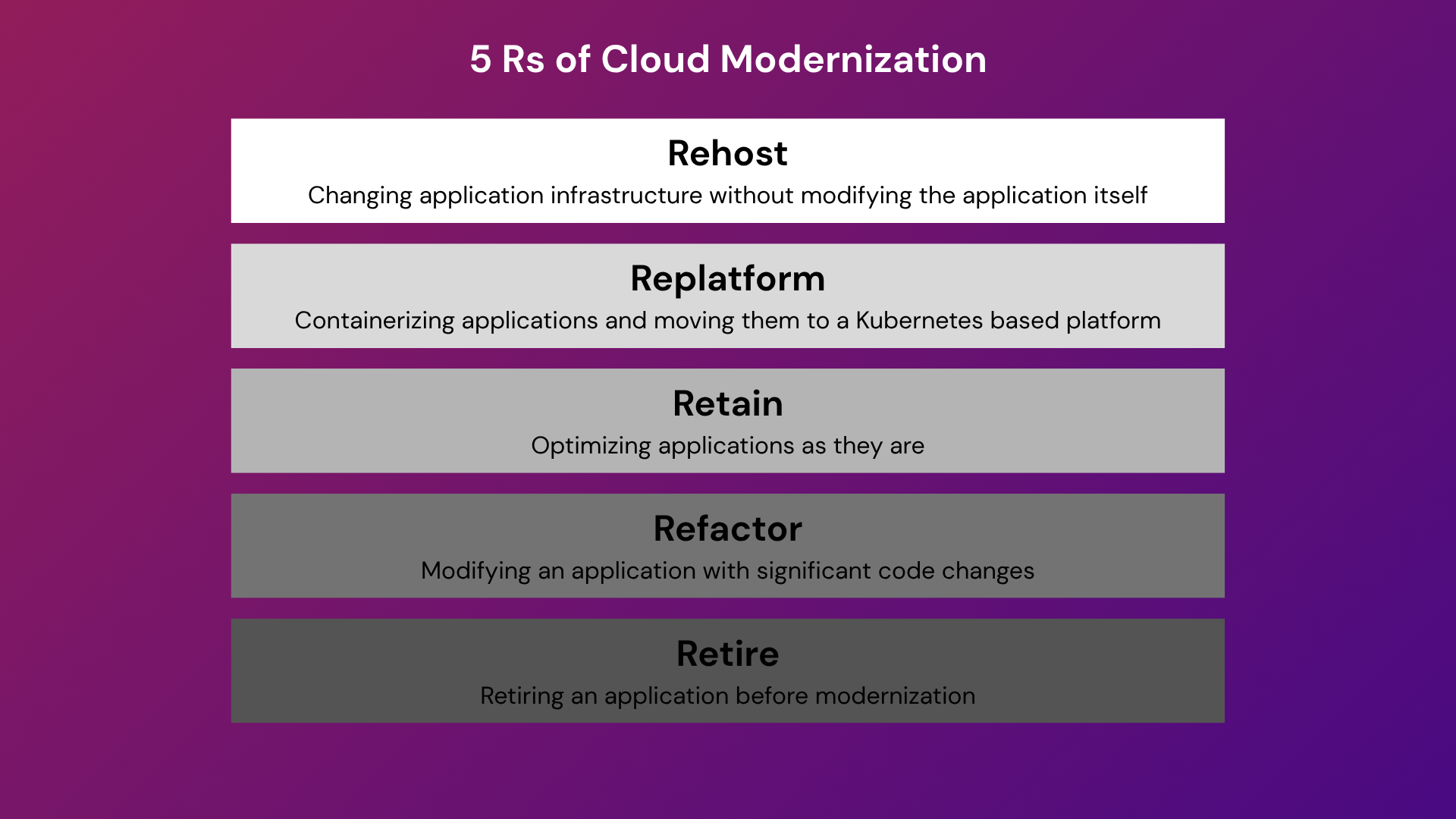
Cloud Modernization Benefits and Challenges
So why modernize? Cloud computing is certainly a game changer for organizations operating with legacy systems, but is cloud computing all its shaped up to be? For organization currently operating within legacy systems, the cloud computing difference is huge, with cloud modernization benefits including:
- Improved system performance
- Enhanced reliability
- Increased agility and scalability
- Stronger system security and backups
- Real-time analytics and monitoring
Essentially the benefits of any cloud computing operation.
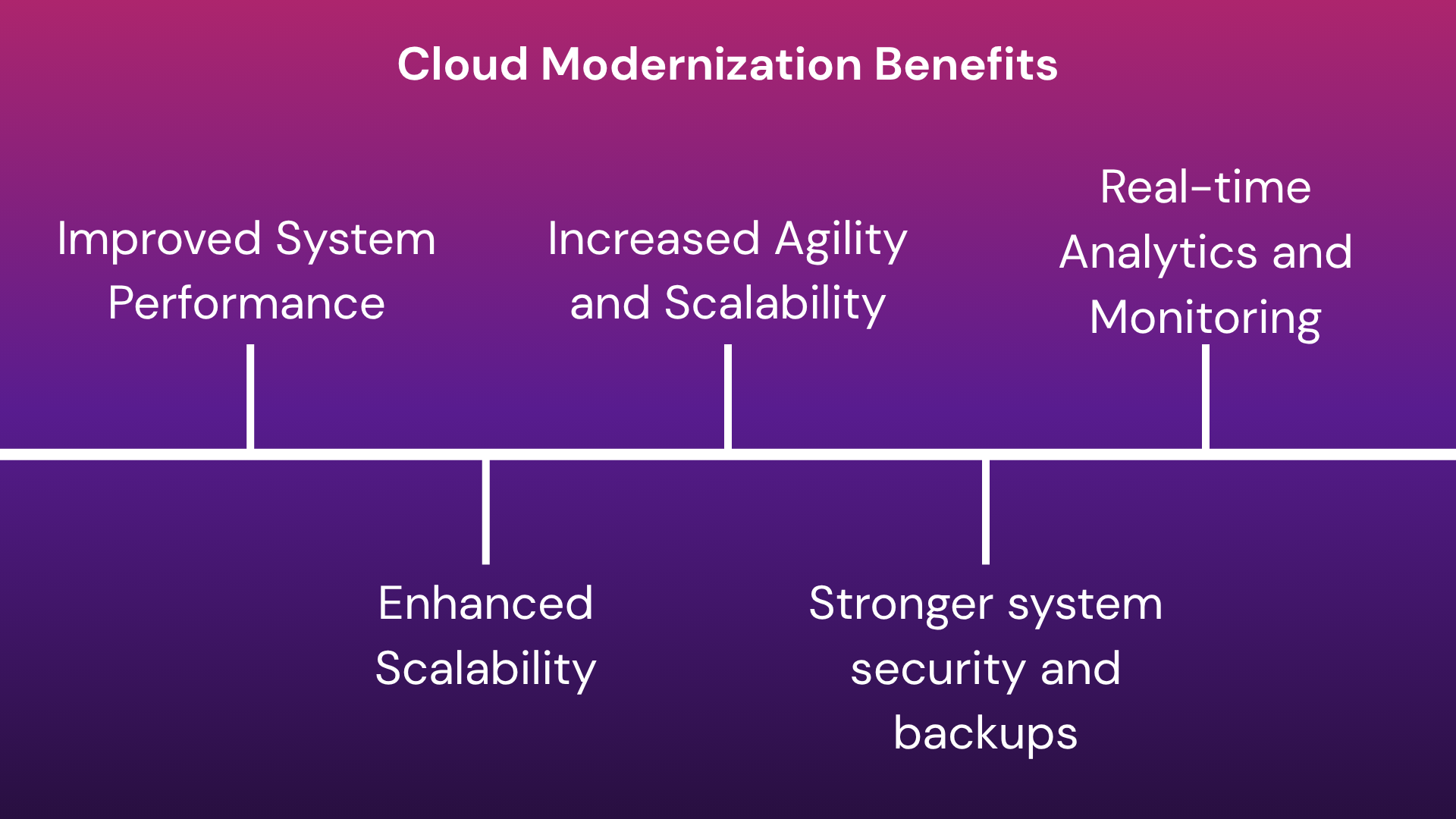
The challenges of cloud modernization, on the other hand, are not something to scoff at. Challenges within the cloud modernization process include:
Legacy System Complexity
The primary focus of cloud modernization is to bring legacy systems into a new age, either reinvigorating them or rendering them obsolete. The problem is, what if core applications are built on top of older technology?
Chances are, legacy systems often lack documentation, with integration into modern systems being nearly impossible because they are not interdependent. Organizations may find difficulty in modernizing their application due to dependence on a legacy system, as well as little to no translation to modern systems. Legacy systems may be so paralyzing that they have the ability to stop a core application from being modernized, leading to more time trying to modernize a legacy system itself.
Skill Gaps
Skill gaps are one of the biggest concerns for cloud modernization, and rightfully so.
Cloud computing resources are abundant and innovative, offering automation and managed capabilities to many pesky tasks. Cloud modernization is required to access those resources, with its own requirements being extremely complex technology like containerization, microservices, serverless tech, and more. That being said, if a team does not possess the skills or is not capable of learning the skills to operate said resources, cloud modernization efforts will be in vain.
Security and Compliance
Transitioning into a new cloud landscape has its perks, but also introduces a new set of vulnerabilities that organizations have to handle. Cloud environments themselves must be compliant with industry regulations, though luckily most cloud providers handle this. Despite the security that cloud service providers offer, it was said that 83% of organizations operating within the cloud have reported a security breach within the last 18 months.
Before even getting onto a new cloud environment, organizations must worry about migrating their data and the application itself onto new infrastructure, worrying about data integrity and transfer success.
Vendor Lock
While not necessarily a challenge within the cloud modernization process itself, vendor lock presents a huge threat within cloud computing operations as a whole. The process of becoming removed from a cloud provider is no fun, however, Lyrid has words for users to avoid vendor lock all together!
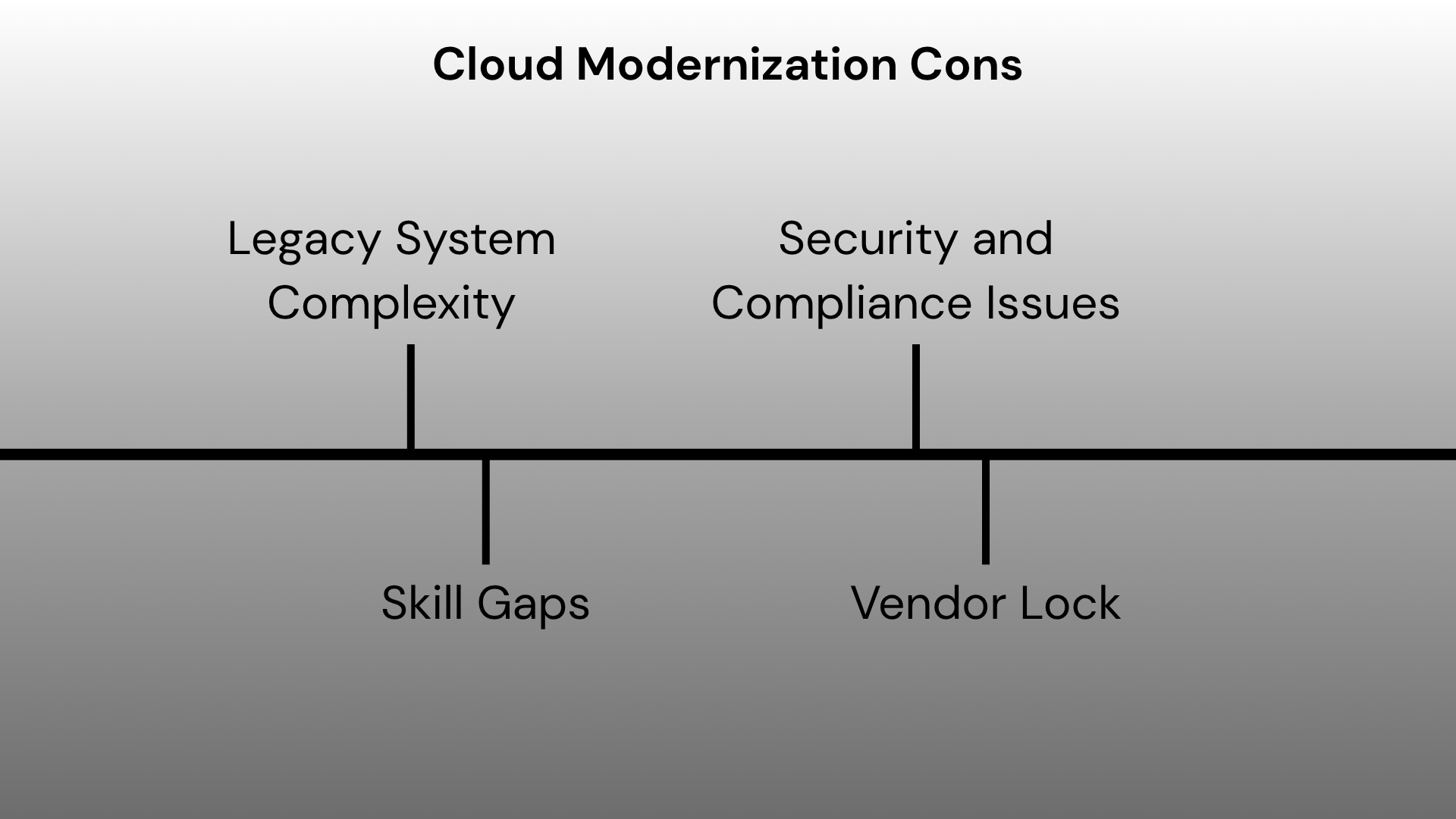
Cloud Application Modernization with Lyrid
Cloud computing has proven itself as one of the leading innovative solutions for modern age time and time again. Organizations operating on legacy systems may find their application’s performance to increase significantly with cloud computing, however, other companies may find that the cloud is unnecessary. Whatever the case may be, it is undeniable that the cloud modernization process is one of the most important internal processes a company can go through.
Cloud application modernization itself can be strenuous, especially for organizations that have not quite dipped their toes in cloud computing yet. Luckily, cloud modernization services and solutions exist to streamline the transition process, with Lyrid offering cloud modernization consulting and migrating services.
Through Lyrid, organizations looking to modernize in the cloud can do so with a peace of mind. Lyrid offers containerization assistance, enabling applications of all sizes to transition to a microservices architecture and become containerized. Within Lyrid’s modern cloud infrastructure, these containerized applications are able to be deployed anywhere, scaled limitlessly, and monitored within a single pane of glass.
And those are just a few of the perks of working with Lyrid.
Cloud modernization can be a tricky process, ask Aido Health. Lyrid was able to modernize their systems and transition them into a microservices architecture, increasing their pagespeed by 30% while decreasing their cloud spend by 58%.
Looking to modernize your systems or for cloud app modernization? Book a consulting call with one of our product specialists to learn more!











